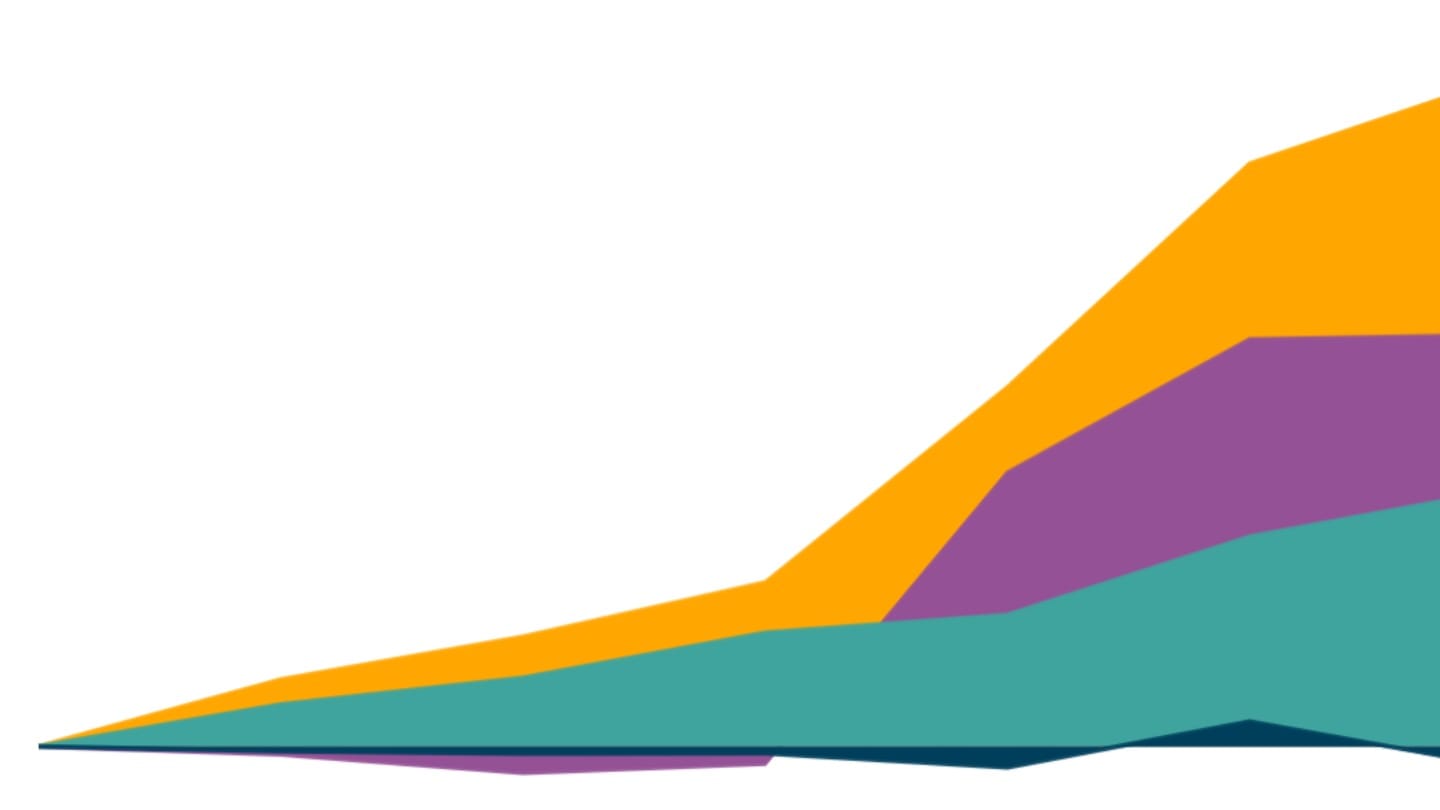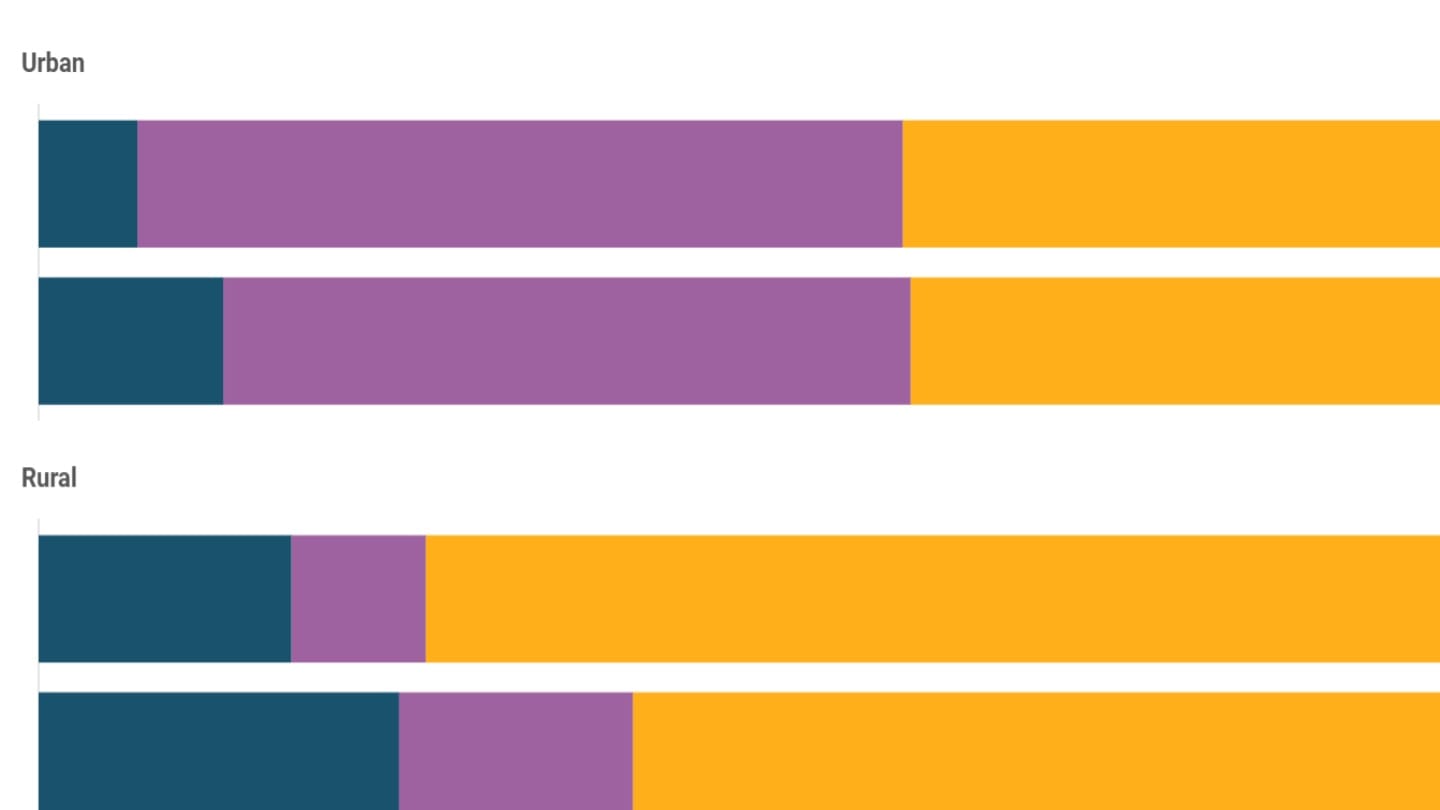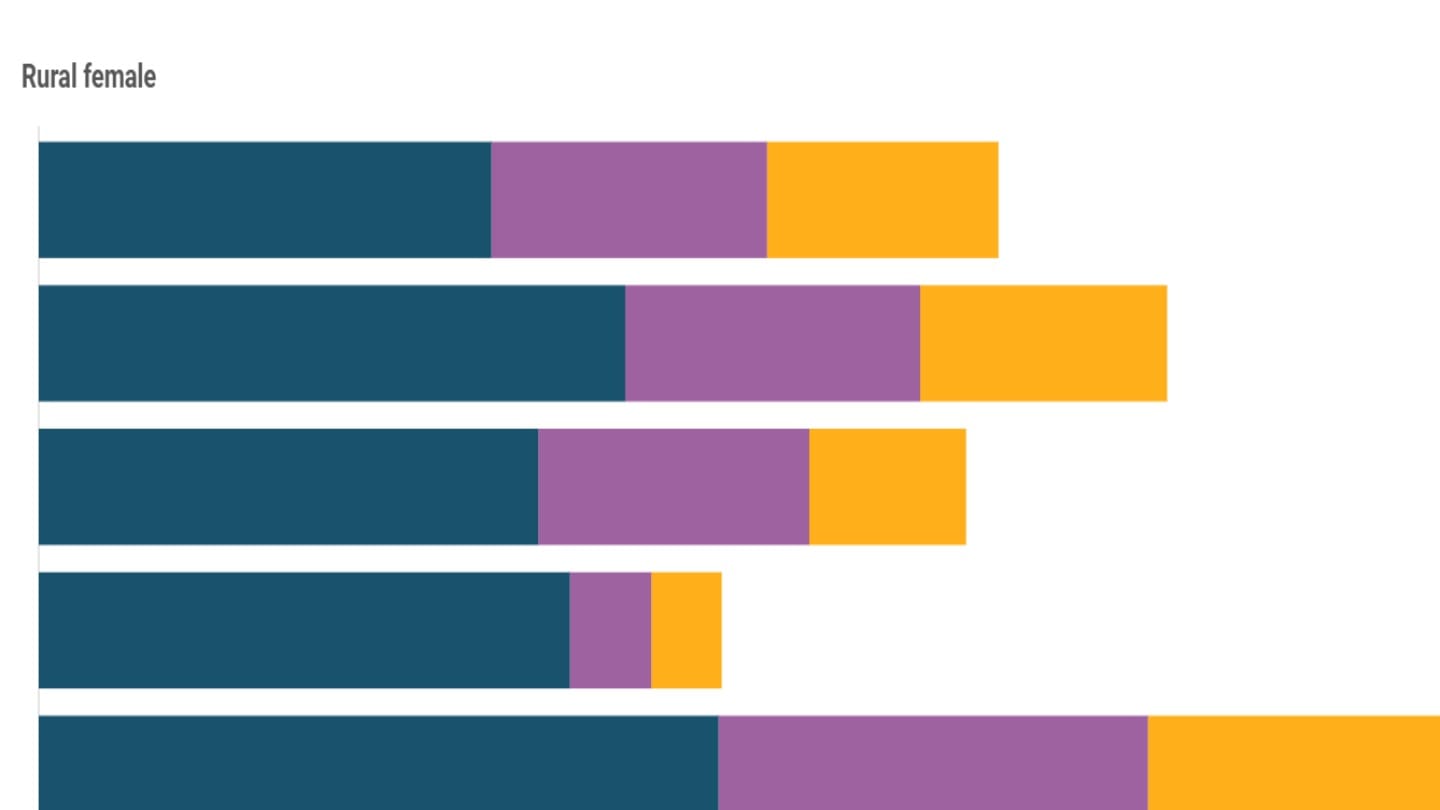What do India's graduates do?
A higher education is seen as a pathway to better jobs and wages. We examine the work that India's 140 million graduates do, and whether having a higher education is a guarantee of better employment.
Despite substantial improvements in education, fewer than 15% of Indians above the age of 25 have completed a graduate degree.[1] The share of graduates in India's adult population is about half that in Germany and about a third of that in the US and the UK.
A higher education is often seen as a pathway to better job prospects and wages. In this piece, we look at the work status of India's 140 million graduates[2], including the type of work they do and their wages, and examine whether a higher education guarantees better employment.
Graduates who are not in the labour force
The working age population can be divided in three broad categories from the lens of the labour market:
- Not in the labour force: those who are neither working nor seeking work
- Employed: those who are working, and
- Unemployed: those who are not currently working, but seek work or are available for work
One-third of India's graduates, or about 45 million , are out of the labour force. This large number of Indian graduates who are out of the labour force is driven largely by women. Low female labour force participation is a feature seen across India's labour force, at all levels of education.
Only four in ten graduate women report being in the labour force. A large section of the remaining graduate women, irrespective of their age, cite home commitments/domestic care as the reason for staying out of the labour force.
Unemployment among India's graduates
Two-thirds of India's graduates, or 95 million, are in India's labour force. But not all of them are employed or worked for most of the previous year.[3]
India's unemployment rate was 3.2% in 2024. But this key economic indicator varies sharply by level of educational attainment. While the unemployment rate among graduates is 13%, it is nearly zero among the illiterate population.
Globally, India's high graduate unemployment rate is similar to some low and middle income developing economies, but it is three to five times higher than that in the advanced economies of Europe and North America.[4]
Among graduates, the unemployment rate is the highest among those in their twenties, many of whom are likely to be fresh graduates. More than a third of graduates in their early twenties are unemployed. The unemployment rate gradually drops with age. As many as 85% of the unemployed graduates are below the age of 30.
Higher unemployment among the higher educated reflects both a lack of quality employment opportunities, and the relative ability of better educated young people to hold out for better opportunities, research by the International Labour Organization and the Institute for Human Development finds. Candidates with higher education such as graduation or above are unwilling to work in low-paying and insecure jobs, and tend to wait until they get an opportunity that suits their needs. However, graduates from disadvantaged social groups who cannot afford to wait for the right job may be forced to accept any type of work available in the market.[5]
While higher educated youth demand well-paying and secure jobs, the supply of such jobs has not been commensurate; growth in high-quality jobs has been slower than the growth in educated candidates, the ILO-IHD report finds.[6]
What graduates in the workforce do
There are more illiterate people than graduates in India's workforce: graduates make up 13% of India's workforce, while the share of people who are illiterate in the workforce is 23%.
Relatively poorer states in the central and eastern parts of India have lower levels of graduates in the workforce, due to lower enrolment and lower share of graduates in the population compared to the national average. For instance, in Bihar, the gross enrolment ratio in higher education is 17% compared to the national average of 28%, and graduates are 8% of its population above 24, compared to 13% nationally.
More salaried jobs
In Indian labour statistics, workers are classified in four types of working arrangements - salaried jobs, casual work, self-employed, and unpaid helpers in family enterprises. Salaried jobs have the highest wages, more stability and are more likely to come with social security benefits.
Higher education raises the chances of being in salaried employment: only 6% of illiterate workers are in salaried jobs, compared to 57% of graduate workers.
Higher rates of formal employment
The majority of Indians work in informal enterprises, which are unregistered enterprises run at the household-level.[7] While 85% of India's workers work in such informal enterprises, the rest work in formal enterprises such as private companies (listed or unlisted) and departments of government. Many developing economies have a high share of informal workers, as opposed to advanced economies.
Among graduates as well, more than half of the workers work in the informal sector enterprises. However graduates are much less likely to work in the informal sector than workers who are less educated, and more likely to work in the formal government or private sector.
The wage premium for graduates
For most Indians, income from labour - or wages[8] - forms the majority of their household income. In 2024, the median casual worker in India earned an estimated Rs 8,500, while the median self-employed worker earned Rs 10,500 in a 30-day period. Salaried workers earned the most, as their median earnings were estimated at Rs 15,000 in a calendar month.
Education levels are strongly associated with differences in wages. Across employment types, graduate workers earn more than non-graduate workers. The wage gap is the lowest among casual workers, and the highest among salaried workers.
Higher-skilled areas of work
In economic terms, there are three primary sectors of work - agriculture, industry and services. While the share of Indian workers in agriculture is declining steadily, it remains the largest employer of Indian workers.
However, this structure looks different for graduate workers. Two-thirds of graduate workers work in the services sector. Education, trade, computer programming, public administration and financial services are the top employing industries for graduates in services.
One-sixth of graduate workers are engaged in the industry sector, where construction activities and the manufacture of clothing and food are the leading employers. Another sixth of them are engaged in agriculture in cropping, livestock and allied activities.
Graduates in India's workforce tend to be in higher-skilled sectors of the economy. While the majority of graduates in the industry sector are in manufacturing, the majority of non-graduates in this sector are concentrated in construction. Similarly, graduate workers in services work in education, financial services, public administration and professional services, while non-graduate workers in services are employed largely in trade, hotels, transport and do paid work as domestic helpers in others' households.
[1] This estimate is produced using the Periodic Labour Force Survey 2023-24, which records the highest level of education successfully completed by household members. Diploma or certificate courses equivalent to graduation level are also considered under the category 'graduate'.
[2] The absolute number of graduates is estimated using the share of graduates derived from the Periodic Labour Force Survey and the estimate of population from the Registrar General and Census Commissioner of India.
[3] India's Periodic Labour Force Survey records activity status of household members in two ways. Activities engaged in for the major part of the year (principal status) and those engaged in for shorter periods (subsidiary status) together make the Usual Status. Activities performed over the seven days preceding the survey are used to arrive at the Current Weekly Status. We use the Usual Status method to understand employment in India.
[4] Unemployment with advanced education (% of total labour force with advanced education), World Development Indicators, World Bank.
[5] India Employment Report 2024, International Labour Organization (ILO) and Institute for Human Development (IHD).
[6] India Employment Report 2024, International Labour Organization (ILO) and Institute for Human Development (IHD).
[7] According to the International Conference on Labour Statisticians (ICLS), unincorporated enterprises owned by households, or (proprietary and partnership enterprises including the informal producers' cooperatives) are considered as informal sector enterprises. India's Periodic Labour Force Survey uses the same definition to categorise enterprises into formal and informal ones.
[8] In the Periodic Labour Force Survey, earnings are recorded for workers in the Current Weekly Status. For salaried workers, earnings for the preceding calendar month are recorded. For self-employed workers, gross earnings minus the expenses for the preceding 30 days are recorded. For casual workers, earnings for each day of the preceding seven days are recorded. Earnings of casual workers are measured for each day for the preceding seven days, but we have normalised them for 30 days using an arithmetic factor (30/7). The calculation uses data from the First Visit of PLFS only (PLFS also has a Revisit schedule).




